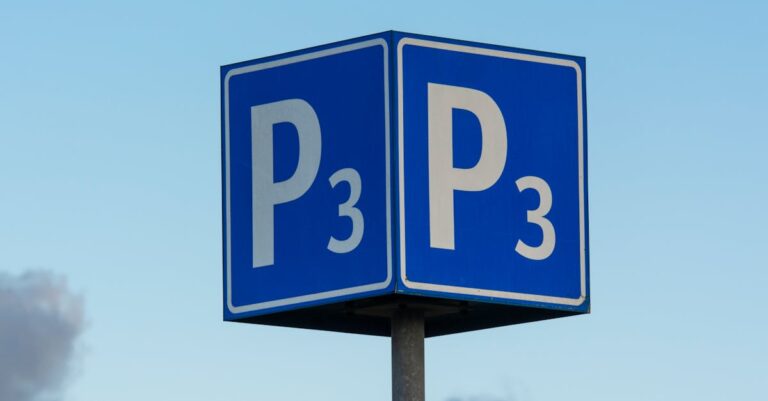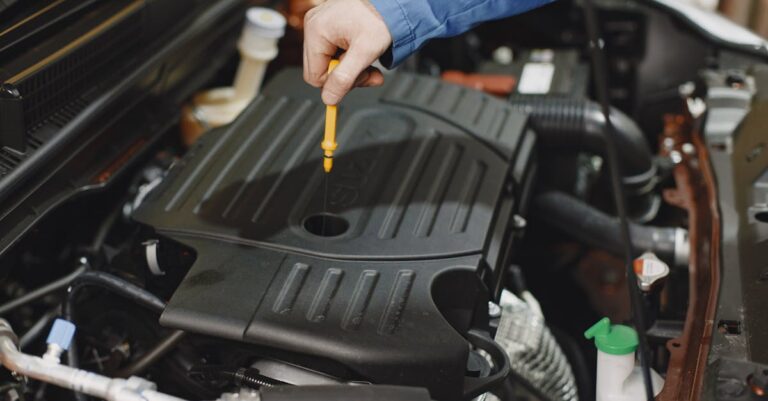**Table of Contents**
- When To Replace Car Brakes: Don’t Ignore These Critical Signs
- Why Are Your Brakes So Darn Important Anyway?
- Listen Up! Audible Warning Signs Your Brakes Are Crying for Help
- Feel the Difference: Physical Sensations Pointing to Brake Problems
- Look Closely: Visual Clues Your Brakes Need Attention
- Beyond the Obvious: Other Factors Influencing Brake Life
- Don’t Wait! The Dangers of Delaying Brake Replacement
- Getting Your Brakes Checked: What to Expect
- Conclusion: Stay Safe, Replace Your Brakes on Time
- Frequently Asked Questions (FAQs)
When To Replace Car Brakes: Don’t Ignore These Critical Signs
Let’s talk brakes. They might not be the flashiest part of your car, but boy, are they crucial. Think about it – they’re the unsung heroes responsible for bringing several thousand pounds of metal, plastic, and you safely to a stop, time and time again. But like any hardworking component, they don’t last forever. Ignoring the signs that your brakes are wearing out isn’t just inconvenient; it’s downright dangerous. So, how do you know when it’s time to give your braking system some much needed TLC? Are there secret signals your car sends out? You bet! Stick around, and we’ll dive deep into the telltale signs that scream “Replace my brakes!”
Why Are Your Brakes So Darn Important Anyway?
Okay, it seems obvious, right? Brakes stop the car. But let’s peel back the layers a bit. Understanding how they work and why their condition is paramount can really drive home the importance of timely maintenance. It’s not just about avoiding fender benders; it’s fundamental to your safety and the safety of everyone else on the road.
The Physics of Stopping (Simplified!)
Imagine your car cruising down the road. It has a ton of kinetic energy – energy of motion. To stop, you need to get rid of that energy. Where does it go? Your brakes convert that kinetic energy into heat energy through friction. When you press the brake pedal, hydraulic fluid pushes pistons, which clamp brake pads onto brake rotors (the shiny discs you see behind your wheels). This friction creates immense heat and slows the rotation of the wheels, bringing your car to a halt. It’s a pretty elegant, yet forceful, process. But all that friction and heat take a toll on the pads and rotors over time, causing them to wear down.
Safety First: Your Brakes Are Your Lifeline
This really can’t be stressed enough. Your ability to stop quickly and predictably is perhaps the single most critical safety feature of your vehicle. Think about emergency situations: a child chasing a ball into the street, the car ahead slamming on its brakes, an unexpected obstacle. In these moments, milliseconds and inches count. Worn or faulty brakes drastically increase your stopping distance, turning a near miss into a potential collision. Maintaining your brakes isn’t just car care; it’s investing in your well being and the well being of others. It’s your primary active safety system, working constantly to keep you out of trouble.
Listen Up! Audible Warning Signs Your Brakes Are Crying for Help
Your ears are fantastic diagnostic tools when it comes to brake health. Cars are designed to give you audible warnings before things get *really* bad. Paying attention to these sounds can save you money and potentially prevent an accident. So, turn down the radio once in a while and listen closely as you apply the brakes.
That Awful High-Pitched Squealing
This is often the first sign drivers notice. You press the brake pedal, and *eeeeeeeeek*! A high pitched squeal pierces the air. While sometimes moisture (like after rain or a car wash) or cheap metallic pads can cause temporary squealing, persistent squealing usually means one thing…
What’s Causing That Noise? The Wear Indicator
Most brake pads have a built in wear indicator. It’s a small metal tab strategically placed near the minimum safe thickness of the pad material. When the pad wears down to this point, the metal tab makes contact with the spinning brake rotor, creating that signature high pitched squeal. It’s essentially your car’s way of saying, “Hey! Pay attention! My brake pads are getting thin!” Don’t ignore this sound. It’s an early warning, meaning you still have *some* pad material left, but it’s time to schedule a replacement soon.
Grinding: The Sound You NEVER Want to Hear
If squealing is a polite warning, grinding is a full blown emergency siren. This is a harsh, metallic scraping or grinding sound that often feels as bad as it sounds. You might even feel it through the brake pedal. This isn’t a “maybe I should get this checked” sound; it’s a “pull over safely and call a tow truck” sound.
Metal on Metal: Serious Damage Alert!
What causes that horrific grinding? It usually means you’ve completely worn through the brake pad friction material. The metal backing plate of the pad is now grinding directly against the metal brake rotor. This is bad. Not only is your stopping power severely compromised (metal on metal doesn’t create effective friction), but you are actively destroying your brake rotors. Rotors are much more expensive to replace than pads. Ignoring the earlier squealing leads directly to this much costlier and more dangerous situation. You might also hear grinding if a rock or debris gets caught in the caliper, but worn out pads are the most common culprit.
Clicking Noises When Applying Brakes
Sometimes, you might hear a distinct clicking sound when you press or release the brake pedal. This could be less alarming than grinding, but it still warrants investigation. It might indicate that the brake pads are shifting slightly in the caliper bracket, possibly due to loose or missing anti rattle clips or caliper bolts. While maybe not immediately catastrophic, it suggests components aren’t as secure as they should be, which can affect performance and lead to uneven wear.
Feel the Difference: Physical Sensations Pointing to Brake Problems
Beyond sounds, your car can communicate brake issues through physical sensations – things you feel through the pedal, the steering wheel, or the car’s general behavior during braking. Pay attention to how braking *feels*.
Spongy or Soft Brake Pedal: Losing Stopping Power?
Does your brake pedal feel mushy or sink further towards the floor than usual when you press it? This “spongy” or soft feeling is a major red flag. It often indicates a problem with the hydraulic system, such as air in the brake lines, a brake fluid leak, or a failing master cylinder. Since the hydraulic system provides the force needed to clamp the pads, a spongy pedal means you’re not getting full braking power. The car might take longer to stop, requiring you to push the pedal much harder. This needs immediate attention from a qualified mechanic.
Vibrations or Pulsating Through the Pedal or Steering Wheel
If you feel a shaking, vibrating, or pulsating sensation through the brake pedal or even the steering wheel when you apply the brakes, especially during moderate to hard braking, it’s often a sign of warped brake rotors.
Warped Rotors: The Usual Culprit
Brake rotors need to be perfectly flat for the pads to apply pressure evenly. However, the intense heat generated during braking, followed by rapid cooling, can cause the metal rotors to warp or develop uneven thickness over time. This is sometimes called “runout.” When the pads clamp onto these uneven surfaces, you feel that pulsing or vibration. While sometimes rotors can be resurfaced (machined flat again), often replacement is necessary, especially if the warping is severe or they’re already worn thin.
Your Car Pulls to One Side When Braking
When you hit the brakes, your car should stop in a straight line. If you feel the car consistently pulling to the left or right during braking, it indicates an imbalance in the braking system. This could be caused by a few things: a stuck brake caliper on one side (not applying or releasing pressure correctly), a collapsed brake hose preventing fluid from reaching a caliper, or unevenly worn brake pads. Regardless of the cause, it’s unsafe because it affects steering control during braking, especially in slippery conditions or emergencies.
Look Closely: Visual Clues Your Brakes Need Attention
Sometimes, you don’t need to hear or feel anything – you can actually *see* signs of brake wear if you know where to look (or if your dashboard decides to tell you!).
Thin Brake Pads: How Low Can You Go?
Depending on your wheel design, you might be able to peek through the spokes and see the brake caliper and pads clamped around the rotor. New brake pads have a decent chunk of friction material. If you look and see that the pad material looks very thin – generally less than a quarter inch (about 6 7 mm) – it’s a good sign they’re nearing the end of their life. A mechanic can give you a precise measurement during an inspection, but a visual check can give you a heads up.
The Brake Warning Light is On (Duh!)
This one seems like a no brainer, but you’d be surprised how many people ignore dashboard warning lights! If your brake warning light (often red, showing an exclamation mark in a circle or the word “BRAKE”) illuminates, *do not ignore it*. It could indicate several serious issues, including:
- Low brake fluid level (potentially due to a leak or worn pads requiring more fluid in the calipers).
- A problem with the anti lock braking system (ABS).
- An issue with the hydraulic system pressure.
- Sometimes, it simply means your parking brake is still partially engaged (double check that first!).
Whatever the cause, a lit brake warning light demands immediate professional diagnosis.
Leaking Brake Fluid
Brake fluid is essential for the hydraulic operation of your brakes. If you notice a puddle of clear to brownish, slightly oily fluid under your car, especially near the wheels or along the lines running underneath, you might have a brake fluid leak. Check your brake fluid reservoir under the hood (consult your owner’s manual for location). If the level is low or keeps dropping, you have a leak. This is extremely dangerous because a loss of fluid means a loss of hydraulic pressure, potentially leading to complete brake failure. Get it checked immediately.
Beyond the Obvious: Other Factors Influencing Brake Life
While the signs above are direct indicators of wear, several other factors influence how quickly your brakes wear out. Understanding these can help you anticipate when replacements might be needed.
Driving Habits: Are You Hard on Your Brakes?
Are you an aggressive driver? Do you frequently tailgate, requiring sudden, hard stops? Do you ride the brakes down hills instead of downshifting? Habits like these generate excessive heat and put significantly more wear and tear on your pads and rotors compared to smooth, anticipatory driving. Gentle braking and looking ahead to anticipate stops will make your brakes last much longer.
Driving Conditions: City vs. Highway Mileage
Where you drive matters. Stop and go city traffic is much harder on brakes than steady highway cruising. In the city, you’re constantly accelerating and braking, generating friction and heat repeatedly. On the highway, you might go miles without touching the brake pedal. So, a car primarily driven in urban environments will typically need brake replacements more frequently than one used mainly for highway commuting, even with the same mileage.
Vehicle Type and Load
Heavier vehicles, like trucks and SUVs, require more braking force to stop, which naturally leads to faster brake wear compared to lighter passenger cars. Additionally, if you frequently tow trailers or carry heavy loads, you’re putting extra strain on the braking system, accelerating wear.
Don’t Wait! The Dangers of Delaying Brake Replacement
Putting off brake repairs is playing Russian roulette with your safety. What starts as a simple pad replacement (relatively inexpensive) can quickly escalate. Ignoring squealing leads to grinding, which damages rotors, significantly increasing repair costs. More importantly, worn brakes drastically reduce your stopping ability. Your stopping distance increases, making accidents more likely. In an emergency, that extra few feet can be the difference between a safe stop and a tragedy. Complete brake failure, while less common with modern dual circuit systems, is still a possibility if leaks or major component failures are ignored. The financial cost of procrastination pales in comparison to the potential cost in property damage, injury, or worse.
Getting Your Brakes Checked: What to Expect
So, you’ve noticed a sign, or maybe it’s just time for a routine check. What happens when you take your car in? A reputable mechanic will perform a thorough brake inspection, which typically includes:
- Measuring the thickness of the brake pads and comparing it to manufacturer specifications.
- Inspecting the brake rotors for wear, warping, scoring, or cracks.
- Checking the brake fluid level and condition (it can become contaminated over time).
- Inspecting brake lines and hoses for leaks, cracks, or corrosion.
- Checking the calipers for proper operation (ensuring pistons move freely and aren’t seized).
- Examining wheel bearings and seals.
- Checking the parking brake functionality.
They should then provide you with a clear report of their findings and recommend any necessary repairs, explaining why they are needed and providing an estimate.
Conclusion: Stay Safe, Replace Your Brakes on Time
Your car’s braking system is arguably its most important safety feature. Knowing when to replace your brakes isn’t just about good car maintenance; it’s about protecting yourself, your passengers, and everyone else on the road. By listening for unusual sounds like squealing or grinding, feeling for changes in pedal feel or vibrations, looking for warning lights or thin pads, and understanding how your driving habits affect wear, you can stay ahead of potential problems. Don’t ignore the warning signs. Be proactive, get regular inspections, and replace worn components promptly. Your brakes are your lifeline – treat them with the respect they deserve!
Frequently Asked Questions (FAQs)
How often should I typically get my brakes checked?
It’s a good rule of thumb to have your brakes inspected at least once a year or every 12,000 miles. Many people incorporate this into their regular oil change or tire rotation schedule. However, if you notice any of the warning signs mentioned earlier, get them checked immediately, regardless of when the last inspection was.
Can I replace just the brake pads, or do I need new rotors too?
It depends on the condition of the rotors. If the rotors are still sufficiently thick, smooth, and not warped, they can sometimes be resurfaced (machined flat). However, modern rotors are often thinner to save weight and may not have enough material to be safely resurfaced. Often, especially if pads were allowed to wear down significantly or if you feel vibrations, replacing both the pads and rotors together is recommended for optimal performance and safety. Your mechanic will measure the rotors and advise the best course of action.
What’s the difference between OEM and aftermarket brake parts?
OEM (Original Equipment Manufacturer) parts are made by the same company that manufactured the original brakes for your vehicle. They are designed to meet the exact specifications of your car. Aftermarket parts are made by different companies and come in a wide range of quality and price points. Some high quality aftermarket parts may meet or even exceed OEM standards, while cheaper options might compromise performance or longevity. It’s best to discuss options with your mechanic; often, reputable aftermarket brands offer good value.
Is it safe to drive with the brake warning light on?
No, it is generally not safe. While the light could potentially be on for a minor reason (like the parking brake being slightly engaged), it usually indicates a serious problem with the braking system, such as low fluid, a leak, or a system malfunction. Continuing to drive risks reduced braking performance or even complete failure. Pull over safely as soon as possible and have the vehicle inspected by a professional.
How much does brake replacement usually cost?
Costs vary widely depending on your vehicle make and model, the type of parts used (OEM vs. aftermarket, standard vs. performance), whether you’re replacing just pads or pads and rotors, and labor rates in your area. Replacing pads on one axle (front or rear) might range from $150 to $350, while replacing both pads and rotors on one axle could be $300 to $800 or more. High performance or heavy duty vehicles will typically be more expensive. Always get a detailed estimate before authorizing work.









